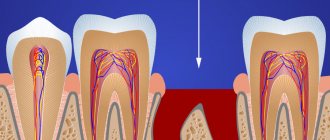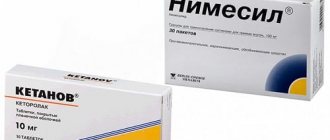Swelling of the throat - what is it?
People of all ages can experience an extremely dangerous condition, symptomatically described as swelling of the throat. This secondary pathology (not an independent disease) is expressed in a narrowing of the lumen of the larynx and indicates the development of diseases of various origins or injury to the organ. Swelling of the throat, the causes of which are inflammatory or non-inflammatory in nature, according to the nature of the course can be:
- lightning - manifests itself in cases of injury to nearby tissues or allergies; the clinical picture is formed within a few minutes;
- acute - accompanies inflammatory processes and infectious diseases; temporary establishment of a full-scale clinic takes up to several hours;
- chronic - detected in the event of neoplasms (benign or malignant); Full development of clinical manifestations requires from several days to several weeks.
Diagnostics
Diagnostic measures are carried out by an otolaryngologist. If appropriate indications are identified, the patient is referred for consultation to an allergist, oncologist, or gastroenterologist. The diagnostic plan includes the following activities:
- Questioning, general examination
. The doctor clarifies the time and circumstances of the onset of the symptom, finds out other complaints, and establishes the dynamics of the disease. During the physical examination, the specialist examines the throat, paying attention to specific signs: fever, rash, enlarged lymph nodes, swelling of other areas of the body. - Express diagnostics
. Performed during a consultation, it allows you to reduce the time for laboratory diagnostics and identify common infections. A streptate test and a flu test can be performed. For allergies, allergy tests are performed. - Endoscopic studies
. Depending on the existing symptoms, the otolaryngologist performs pharyngoscopy, direct or indirect laryngoscopy, and endoscopy of the larynx. In case of infectious pathologies and neoplasms, material is collected for subsequent laboratory tests. - Lab tests
. Along with a general blood test, which confirms the presence of an inflammatory process in the body, most often in case of swelling of the throat mucosa, a microbiological examination of a smear is performed to determine the microflora and its sensitivity to antibiotics. If tumor processes are suspected, biopsies are studied during histological or cytological examination.
In some cases, radiography of the nasopharynx, larynx or trachea, and X-ray examination of the lungs are indicated. For GERD, esophagoscopy and gastroscopy are performed. Appropriate tests are performed to identify specific infections.
Taking a swab from the throat mucosa
Swelling of the throat with sore throat
International medical practice classifies inflammation of the tonsils as acute tonsillitis. However, the more familiar name for us “angina” (translated from Latin means “squeeze, strangle”), quite accurately describes the ongoing pathological process. Swelling of the throat during sore throat partially blocks the airways, and the patient begins to choke. This rather serious local complication is accompanied by:
- stridor (difficulty noisy breathing);
- pain when swallowing in the absence of cough;
- swelling of the neck, change in color of the skin of the face (pallor, and then cyanosis).
1.General information
Laryngeal edema is a life-threatening condition that manifests itself as obstruction of the upper respiratory tract and, in the case of severe asphyxia, can be fatal.
Like other local edema, laryngeal edema is an accumulation of fluid in the intercellular space, as a result of which the tissue swells and increases in size, and the air lumen, accordingly, narrows. In contrast to the spasm of the larynx described on our website (see), which in most cases resolves quite quickly, swelling of the larynx can persist for a long time; any tendency towards its progression requires emergency medical attention.
Obviously, local laryngeal edema cannot be considered an independent disease - it is always a consequence of some process, reaction or condition. In general, there are many reasons, which explains the relatively high incidence of laryngeal edema in clinical practice.
A must read! Help with treatment and hospitalization!
Swelling of the throat due to a cold
One of the symptoms accompanying colds is swelling of the larynx. Swelling of the throat during a cold manifests itself:
- sore throat, pain when swallowing;
- dry cough, change in voice timbre up to aphonia (complete loss of voice);
- difficulty breathing.
The severity of the clinical picture depends on the disease and the individual reactivity of the patient’s body. For example, with false croup, swelling of the throat in a child can be complicated by laryngeal stenosis.
Symptoms of Quincke's edema.
The first sensations that a person experiences are a burning sensation and a slight tingling sensation at the site of future swelling. Then swelling occurs. Dangerous swelling appears on the face (lips, eyelids, cheeks) and neck. The tongue is very swollen. It gets to the point where a person’s face becomes like a ball, and the patient is not even able to fully open his eyes.
In the first minutes after interaction with the irritant, symptoms may appear in adults and children, such as lacrimation, problems breathing through the nose, the appearance of a dry cough and hoarseness in the voice. Another important symptom of angioedema of the throat is “wheezing”, heavy breathing. All these symptoms very quickly gain momentum and become intense. It’s as if a person was bitten by a swarm of bees - this is what angioedema looks like externally.
In addition to external changes, this dangerous condition has other symptoms: decreased blood pressure, excessive sweating, and rapid heartbeat.
Angioedema of the larynx is the most dangerous manifestation of angioedema, when swelling affects the throat and airways. An emerging cough, sore throat, difficulty swallowing, a feeling of a lump in the throat, problems with speech - all these symptoms indicate incipient asphyxia (suffocation).
When the first symptoms of Quincke's edema appear, you need to call an ambulance so as not to waste precious time. If the swelling of the larynx is not relieved soon, the person may die. Even if death was avoided and treatment of angioedema was not delayed, prolonged absence of normal breathing can lead to damage to brain activity.
Allergic swelling of the throat
Severe development is characterized by swelling of the throat due to allergies. Many substances and agents can act as allergens - dust, insect bites, animal hair, some medications, foods, etc. Allergic swelling of the throat is expressed by specific signs in addition to the main symptoms:
- nasal congestion and discharge (rhinitis);
- bronchospasm;
- diarrhea and skin rashes;
- lacrimation.
A particularly dangerous form of allergic swelling of the throat is Quincke's edema.
Causes of laryngeal edema.
In addition to knowing about the first signs of angioedema, you need to understand why, in principle, this dangerous condition can arise.
Typically, angioedema is of an allergic nature, but there are cases when the human body is affected not by allergens, but by other external factors.
The most common causes of angioedema of the larynx are:
- certain foods (for example, eggs, chocolate, etc.);
- plant pollen during the flowering period;
- fungi;
- household chemicals;
- taking medications;
- insect bites;
- dust;
- pet hair or excretions;
- exposure to open sun;
- hypothermia;
- stressful situations;
- digestive problems;
- heredity.
How to relieve throat swelling at home?
It must be remembered that at the first symptoms of throat swelling, urgent medical attention is needed. The likelihood of rapid development of the condition requires emergency medical intervention to save the patient’s life. In such a situation, the problem of how to relieve throat swelling at home comes down to providing emergency assistance before the ambulance arrives:
- try to calm the patient, as a panic state increases swelling;
- try to provide access to air (unbutton your collar, remove your tie, if possible, increase the humidity of the room);
- if there is absolute confidence in the allergic nature of the swelling of the throat, then give the patient an antihistamine.
Treatment
Help before diagnosis
If swelling occurs, you should ensure a sufficient supply of fresh air, comfortable humidity and temperature in the room, and avoid taking food and drinks that are too cold, too hot, or irritating the mucous membrane of the throat. For swelling of infectious and inflammatory origin, you can gargle with herbal decoctions and use local remedies. In case of allergic reactions, it is necessary to use antiallergic drugs.
An increase in body temperature and signs of intoxication are reasons to contact a therapist or otolaryngologist. Self-administration of antibiotic therapy is prohibited due to the ineffectiveness of this type of treatment without taking into account the characteristics of the pathology, the possible development of side effects and adverse consequences.
Conservative therapy
The treatment regimen may include drug and non-drug methods. For diseases with swelling of the throat, the following are used:
- Local preparations
. Sprays, lozenges, lozenges, and other local dosage forms with analgesic and anti-inflammatory effects are effective symptomatic remedies for viral and bacterial infections and help reduce swelling and discomfort in the throat. - Antiallergic medications
. To quickly eliminate throat swelling and other allergy symptoms, antihistamines and mast cell membrane stabilizers are used. - Antibiotics
. Antibiotic therapy is indicated only for bacterial diseases and is ineffective for viral infections. First, broad-spectrum agents are prescribed, then the treatment regimen is adjusted taking into account the antibiotic sensitivity of the pathogens, as determined by the results of smear culture. - Physiotherapy
. For throat diseases, inhalations, ultraviolet irradiation, UHF, laser therapy, ultraphonophoresis, medicinal electrophoresis, and other methods are prescribed. - Intubation.
Necessary for the development of severe swelling of the throat, the threat of asphyxia.
Diagnosis of pathology
Only a doctor can make an accurate diagnosis based on a complete examination. If you have a history of allergies and swelling develops rapidly, you should call an emergency medical team. Before doctors arrive, it is worth opening the windows or taking the person out into the fresh air, removing tight clothing, and giving an antihistamine according to age. If the course is not so rapid, you can consult a therapist.
Examination plan:
- taking anamnesis (hypothermia, additional symptoms, contact with patients, etc.);
- inspection;
- general blood analysis;
- swab from the surface of the oropharynx (if necessary);
- Ultrasound of the thyroid gland (as directed by an endocrinologist).
If the therapist could not determine the cause of the edema, the patient is referred to an otolaryngologist or allergist. The next step will be to contact an endocrinologist, infectious disease specialist, and phlebologist. But most often the problem is solved in the therapist’s office.
2. Reasons
The variety of factors that can cause laryngeal edema are usually divided into large groups:
- hypersensitivity reactions (allergy, anaphylactic shock, etc.);
- injuries, including mechanical, chemical, thermal, radiation;
- acute infectious diseases of the ENT organs (especially in children);
- acute and chronic infectious and inflammatory processes in the laryngopharynx and adjacent structures;
- cardiovascular diseases;
- oncological diseases;
- renal failure with impaired fluid excretion.
Factors that increase the risk of developing laryngeal edema due to the above reasons include hypovitaminosis and exhaustion, diabetes mellitus, weakened immunity, and smoking.
Visit our Otolaryngology (ENT) page










